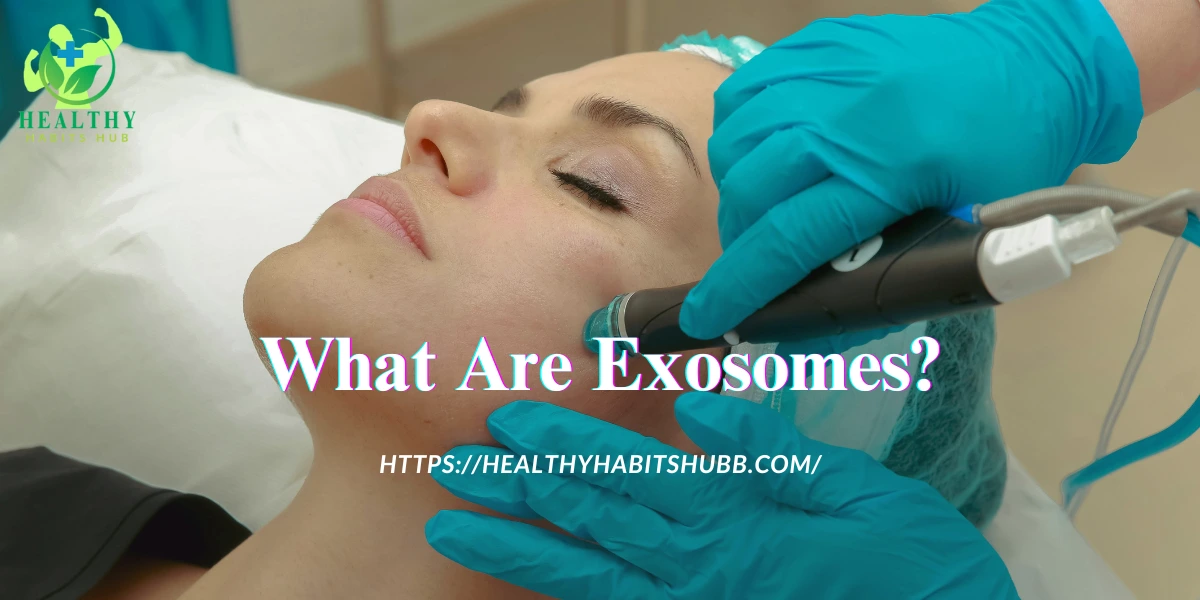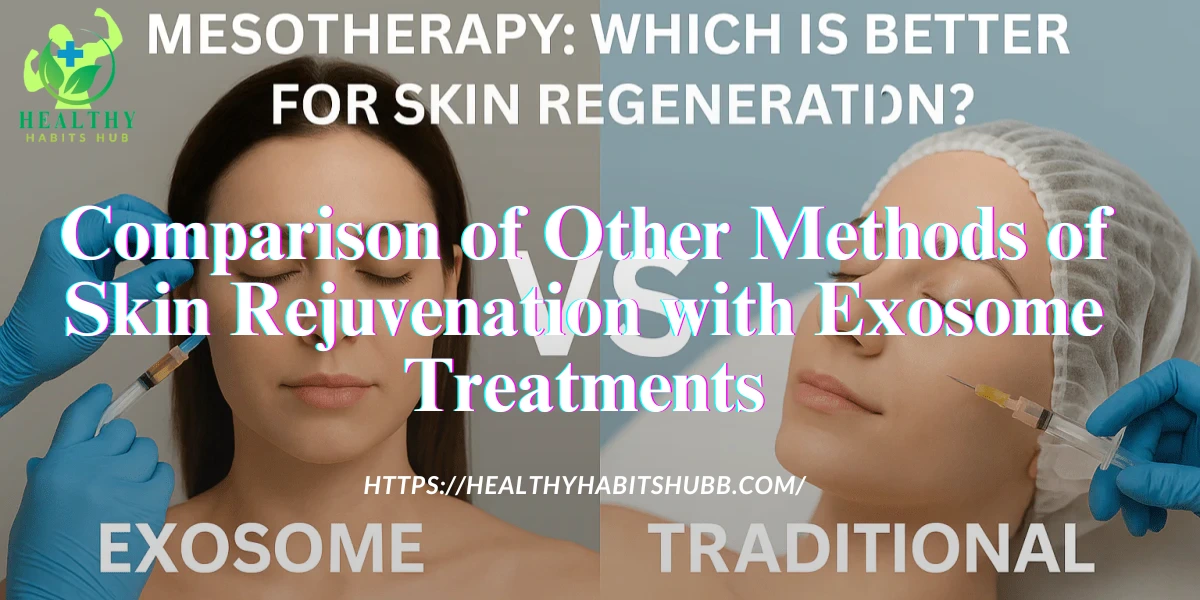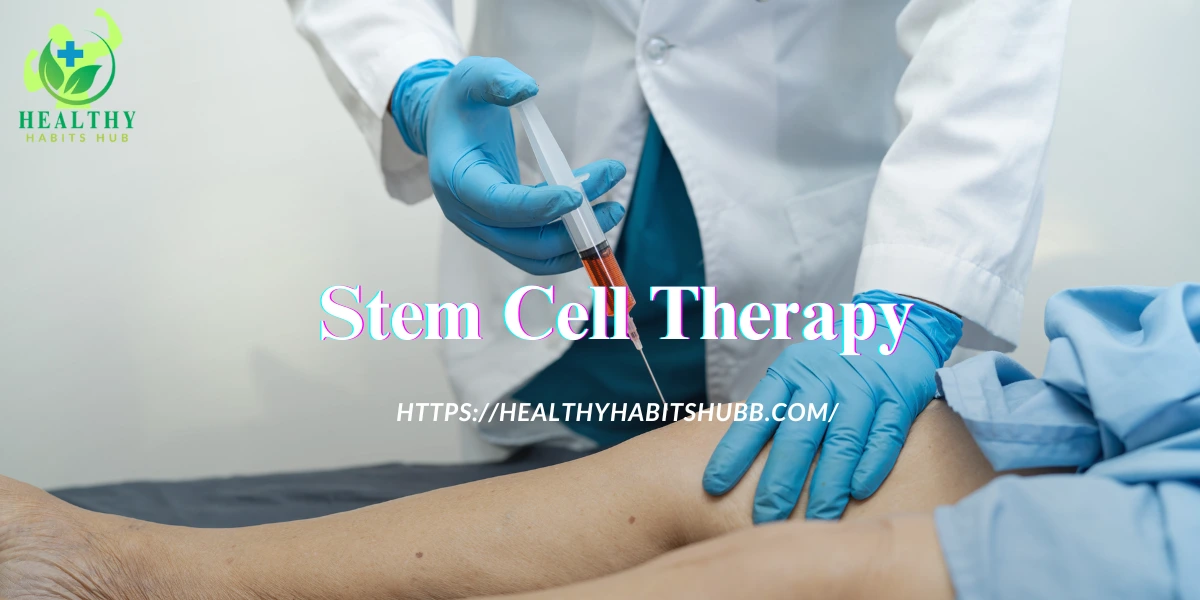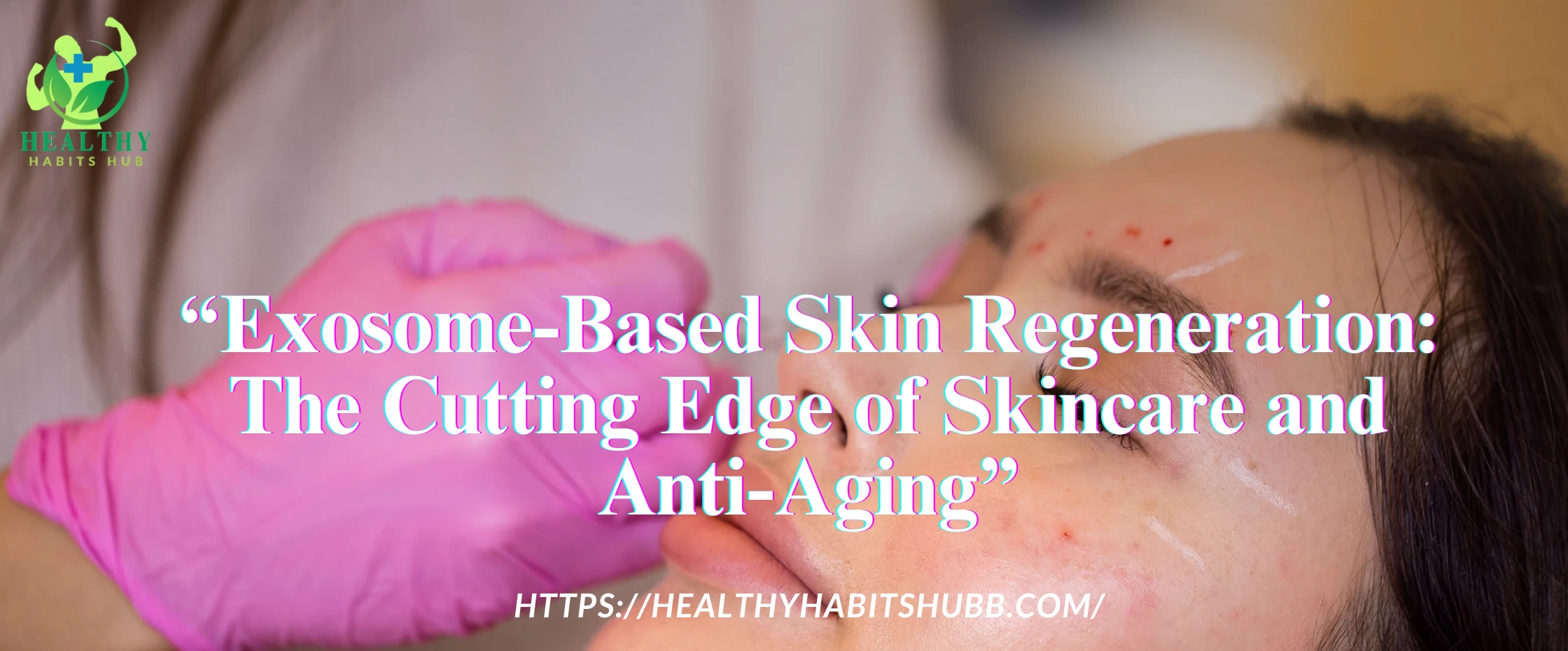Introduction
Table of Contents
ToggleThe field of skincare innovation seems to advance almost daily, each new product claiming to treat problematic skin in a revolutionary way. An innovation that is gaining significant traction is exosome-based skin regeneration. This technology has the potential to transform the beauty industry by providing solutions for anti-aging, skin repair, and skin rejuvenation. In this article, we will discuss the concept of exosomes, their mechanisms, and their applications in skin regeneration.
What Are Exosomes?

Exosomes are a subtype of extracellular vesicles with a diameter of 30–150 nm that are released by all eukaryotic cells. They contain bioactive molecules such as proteins, lipids, and RNA. These molecules are essential for cell and intercellular communication and are involved in the regulation of many biological functions, including immunity, repair of tissues, and regeneration. Therefore, exosomes are the means through which biological systems communicate and coordinate their functions.
The development of exosomes has sparked new opportunities in the field of medicine, especially in regenerative medicine. For skincare purposes, exosomes are being used to aid in cellular rejuvenation, tissue repair, and mitigate inflammation. Exosome-based therapies constructively aid in collagen stimulation, enhancement of skin elasticity, and general skin health by bioactive molecule delivery to skin cells.
The Science Behind Exosome-Based Skin Regeneration
An understanding of the body’s healing processes is crucial to understanding how treatments utilizing exosomes function. Healing inflammation, cell proliferation, and tissue regeneration phases are the consequence of skin damage from aging, sun exposure, or injury. These phases are orchestrated by a myriad of growth factors and cytokines aimed at healing and regenerating the skin.
Exosomes are essential for the healing process to be effective. Cells releasing exosomes will have peptides with potent signals for tissue repair and regeneration. Research has shown that using exosomes from stem cells or other regenerative cells can enhance the natural healing response, thus leading to better and faster skin healing.
Using exosomes as messengers allows the delivery of bioactive molecules to the deeper layers of skin, assisting with bioactive molecule skin regeneration. These bioactive molecules can help stimulate collagen, elastin, and other vital extracellular matrix components responsible for maintaining healthy and youthful skin.
Administration Procedures for Exosome Treatments

As with many other skin regeneration treatments, exosome-based therapies are usually administered through injections or topical applications. In some cases, exosomes are infused directly into the dermal layers of the skin via microneedling or other minimally invasive techniques. These procedures allow for deeper delivery of exosomes, facilitating stimulation of collagen synthesis which improves skin texture and tone.
Generally, the procedure encompasses the following steps:
- Preparation: Prior to treatment, the skin is cleansed and prepped to ensure exosome delivery is optimized.
- Application: Depending on treatment type, exosomes are either injected into predetermined areas of the skin or topically applied. In certain cases, microneedling devices may be used to inject exosomes deeper into the skin by creating micro channels.
- Post-Treatment Care: Patients may notice some redness or swelling after treatment. These symptoms, if they occur, are generally mild and resolve within hours to one day. Following treatment guidelines such as avoiding direct sun exposure and wearing only gentle cleansers is critical.
- Results: With time, exosome-based treatments assist in skin elasticity, fine and coarse lines and wrinkles reduction, and skin rejuvenation. While results differ among individuals, a significant proportion report substantial improvement in skin texture, tone, and firmness several weeks after commencing treatment.
The Advantages of Exosome-Based Skin Regeneration
- Anti-Aging Properties: Exosome-based skin regeneration treatments are sought for their capability to counteract aging signs. Exosomes are a class of biomolecules that can be utilized for skin regeneration. As humans age, collagen and elastin production in the skin declines, which leads to wrinkles, sagging skin, and other age-related changes. Exosome-based treatments are able to encourage the synthesis of these crucial proteins, which will result in firmer skin and a more youthful appearance.
- Revitalization of Skin’s Texture and Tone: The treatment utilizing exosomes is effective in restoring skin’s tone and texture. This therapy helps in mitigating the acne scars, hyperpigmentation and other skin flaws by enhancing skin renewal processes. It results in skin that is more even-toned, smoother, and appears healthier and vibrant.
- Advanced Healing of Skin: Exosome therapy serves as an effective biological method of enhancing the healing process for individuals with damaged or unhealthy skin. Whether it is due to acne scarring, sun exposure, or injury, exosomes can help in faster tissue repair along with reduction in inflammation which results in healthier skin.
- Little Recovery Time Needed: Exosome treatments markedly increase efficiency while maintaining a low recovery time when compared to chemical peels or laser resurfacing treatments. Patients are able to return to their normal routines within hours, which makes the treatment an attractive option for rejuvenating skin without significantly interrupting daily activities.
- Low Risk of Complications: Exosome-based treatments are considered to have a low risk of complications and are non-invasive. Since they are less effective than traditional cosmetic procedures, there tends to be a lower risk of side effects. Regardless, they are safer than more traditional cosmetic procedures. Still, it is best to consult a professional to determine whether you qualify for exosome-based skin treatments.
Comparison of Other Methods of Skin Rejuvenation with Exosome Treatments

Exosome therapy stands out when you compare it to other skin rejuvenation methods like Botox and dermal fillers, and chemical peels.
Botox and Dermal Fillers
Botox and dermal fillers are two popular approaches to treating wrinkles and volumizing the skin. While effective, both approaches provide only temporary results. On the contrary, exosome-based treatments stimulate the skin’s natural regenerative processes, yielding longer lasting improvements. Exosomes promote collagen production and tissue repair, addressing the underlying causes of aging rather than masking the symptoms.
How Does Botox Work?
Botox works by temporarily blocking the release of acetylcholine, a neurotransmitter that allows nerve signals to pass to the muscles. When injected into specific muscles, Botox prevents them from contracting, causing the overactive muscles to relax and the skin above them to smooth out. As a result, the wrinkles caused by repetitive facial expressions become less noticeable or even disappear altogether.
Botox Treatment Process
- Consultation: A consultation with a trained healthcare professional will determine if Botox is right for you. The doctor will assess your facial muscles and discuss your desired outcomes.
- Injection: Botox is administered using a fine needle into the targeted muscles. The process is quick, and the procedure typically takes around 10-15 minutes.
- Aftercare: There is minimal downtime after Botox injections, although some patients may experience slight redness or swelling at the injection sites. You can return to your regular activities immediately after the treatment.
- Results: You will start seeing results within 3-5 days after treatment, with full effects appearing within one to two weeks. The results last for about three to six months, after which the treatment can be repeated.
Benefits of Botox
- Reduces Fine Lines and Wrinkles: Botox is effective at treating dynamic wrinkles, providing a smoother, more youthful appearance.
- Non-Surgical: Unlike facelift surgery, Botox is a non-invasive treatment that doesn’t require cuts or stitches, making it a popular choice for individuals seeking a less invasive option.
- Quick Procedure with Minimal Downtime: Botox injections typically take only a few minutes, and most people can resume their normal activities right away.
- Prevents Future Wrinkles: Regular Botox treatments can help prevent new wrinkles from forming by relaxing the muscles that cause wrinkles.
- Safe and Well-Studied: Botox has been used in medical and cosmetic treatments for decades, with a proven track record of safety and effectiveness when administered by a trained professional.
Chemical Peels and Laser Resurfacing
Improving skin texture and reducing wrinkles through chemical peels and laser resurfacing treatments often involve considerable recovery time and may result in adverse effects like redness, irritation, or changes in pigmentation. Exosome treatments, on the other hand, have a lower level of invasiveness and therefore require less recovery time, offering a quicker approach to skin rejuvenation as compared to other treatments.
How Chemical Peels Work
Chemical peels work by using various acids or other chemicals that exfoliate the skin. The solution is applied to the skin, where it breaks down the bonds between dead skin cells, allowing them to be removed more easily. As the skin heals, new, healthier skin cells are produced.
Some common chemicals used in chemical peels include:
- Alpha Hydroxy Acids (AHAs): Commonly used in superficial peels, these are derived from fruits and milk and help to exfoliate the skin.
- Beta Hydroxy Acid (Salicylic Acid): Often used for treating acne and oily skin, salicylic acid helps to unclog pores and reduce inflammation.
- Trichloroacetic Acid (TCA): Used in medium to deep peels, TCA can address more severe skin concerns like age spots, acne scars, and sun damage.
- Phenol: A strong chemical used in deep peels for more aggressive treatments of deep wrinkles and scarring.
Stem Cell Therapy

Stem cell therapy is a condition-related treatment that is somewhat similar to exosome-based skin regeneration. While stem cell therapy consists of administering stem cells into the body to facilitate healing, exosome therapy tends to be more sophisticated and efficient because it employs a strategy of extracting and utilizing only the regenerative bioactive molecules instead of the whole stem cell.
How Does Stem Cell Therapy Work?
Stem cell therapy works by introducing stem cells into the body to repair or replace damaged tissue. The goal is to harness the natural regenerative properties of stem cells to stimulate healing and regeneration of the affected area. There are several ways stem cells are used in therapy:
- Injecting Stem Cells into Damaged Tissues: Stem cells can be directly injected into areas of the body where tissue has been damaged due to injury, disease, or aging. For example, stem cells may be injected into a damaged joint to promote the regeneration of cartilage and alleviate symptoms of osteoarthritis.
- Culturing Stem Cells in the Lab: In some cases, stem cells are harvested from the patient or a donor and cultured in a laboratory to increase their numbers. These cells are then injected back into the patient’s body to promote healing.
- Creating Stem Cell-Derived Tissues: Stem cells can also be used to create specific tissues or organs in the lab for transplant purposes. For instance, stem cells may be cultured into heart muscle cells to help repair heart tissue in patients with heart disease.
- Stem Cell-Activated Therapeutics: Sometimes stem cells are not directly used for replacement but are instead used to activate the body’s own regenerative processes. For example, stem cells might be used to trigger healing signals in a damaged area or stimulate the production of growth factors that promote tissue repair.
The Future of Stem Cell Therapy
The future of stem cell therapy is incredibly promising. With advancements in research and technology, stem cell treatments are becoming more refined, targeted, and effective. As scientists continue to uncover the full potential of stem cells, we can expect to see more treatments emerge for conditions that were previously difficult or impossible to treat.
Some exciting areas of research include:
- Gene Editing and Stem Cells: The combination of gene editing techniques like CRISPR with stem cell therapy could enable precise modifications of stem cells, improving their ability to regenerate tissue and treat genetic disorders.
- 3D Bioprinting: 3D printing technology could allow for the creation of customized tissues and organs from stem cells, offering the potential for organ transplants without the need for donor organs.
- Expanded Applications: As our understanding of stem cells grows, we can expect more applications in areas like cosmetic surgery, age-related degeneration, and even personalized cancer treatments.
The Future of Exosome-Based Skin Regeneration

With ongoing research into exosome-based therapies, it is anticipated that more sophisticated therapies will be developed. There is ongoing research on improving the methods of isolating and delivering exosomes which aims to optimize treatment efficacy and availability. Furthermore, in combination with other regenerative treatments, exosome-based therapies can enhance the overall approach to skin rejuvenation.
The prospective roles of exosome therapies in skin regeneration go further than just anti-aging. Exosome therapies may also be useful in the treatment of skin conditions like eczema, psoriasis, and even skin cancer. There is also ongoing research into the possibility of using exosomes for hair restoration, thus providing hope for individuals suffering from hair loss.
Conclusion

Exosome therapies represent a new frontier in skincare that utilizes the body’s natural repair systems. Exosome therapies can help rejuvenate the skin by increasing collagen production and improving tissue repair, while also aiding in repair of aged tissue. With the advancement of science surrounding exosomes, it’s evident that this technology will have an impact on skincare.
For those wanting to learn more about exosome therapies, further research is available, as well as consulting with a skincare professional to determine its appropriateness for the individual.
Related Article:
Exosomes in Skin Regeneration and Rejuvenation: Current Perspectives

